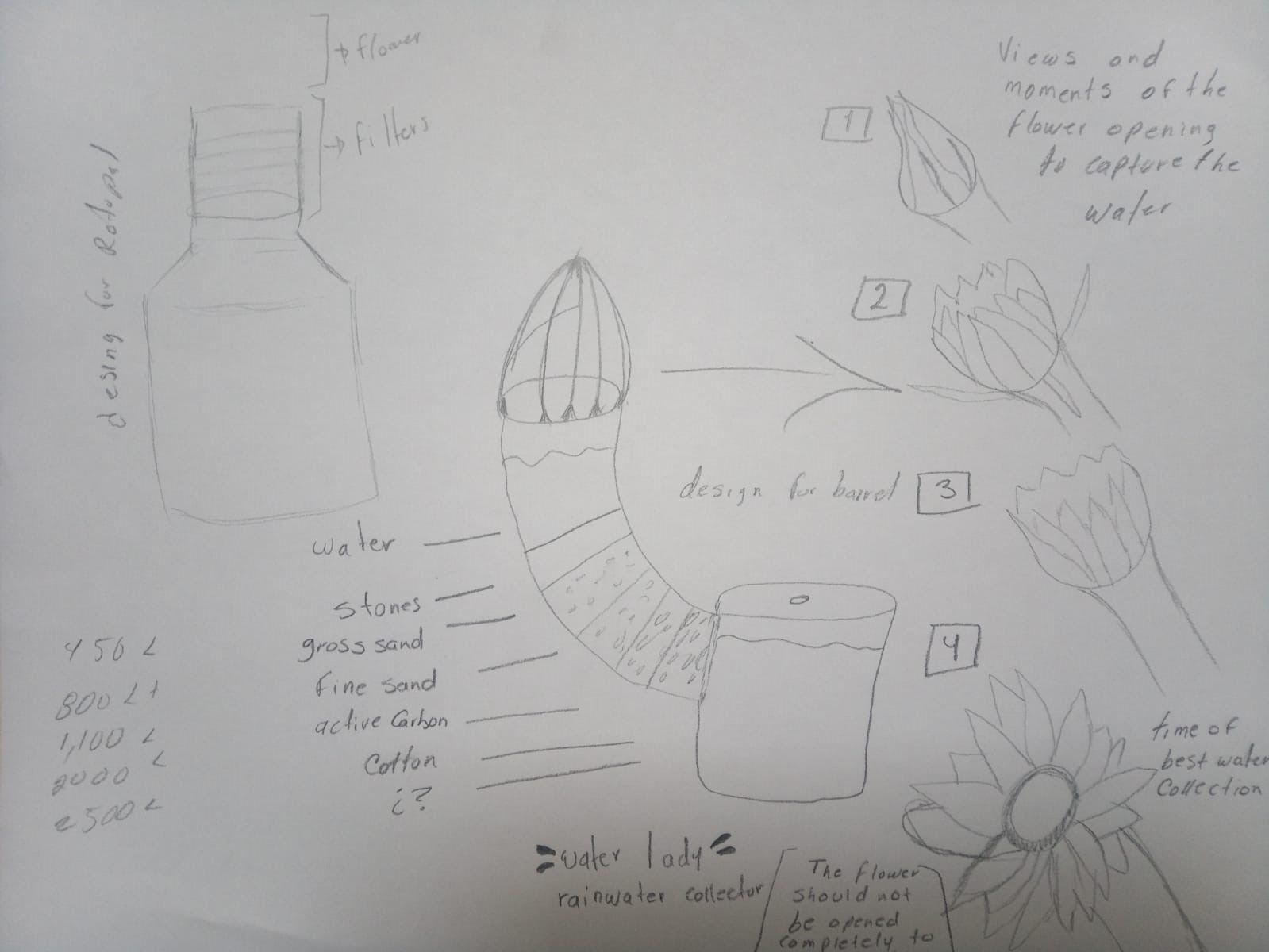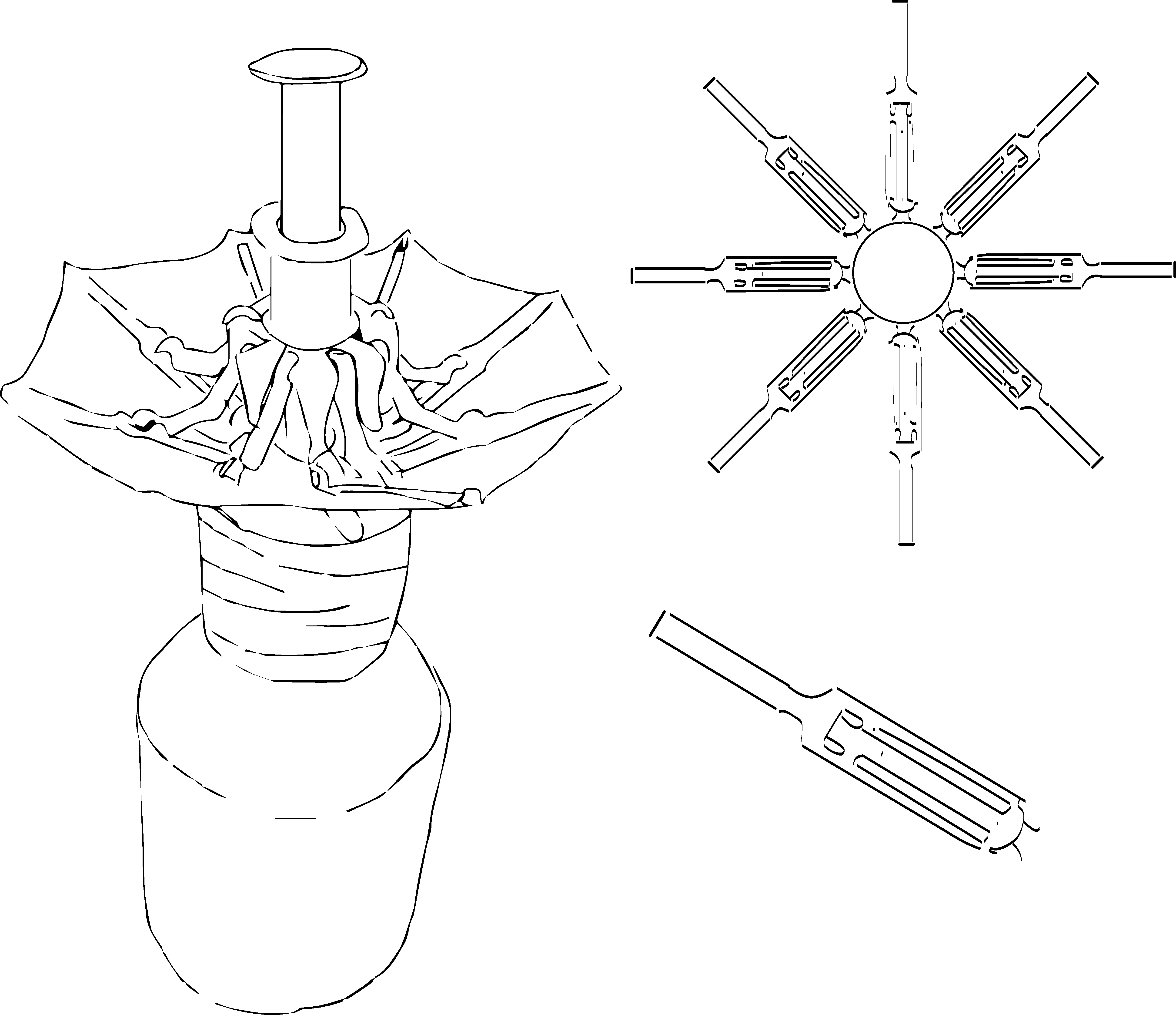My Final Project: Automated Water Collection System with Automatic Shut-Off and Purification Filter.
Main idea
For my final project, I want to build a tulip garden that collects rainwater, filters it, and stores it for later use at home. In principle, the flower will open and close by means of humidity sensors, the stem will have different layers of natural materials for the elimination of heavy metals and the pot will be a container for the liquid, depending on the size and place of placement, it can be used for garden irrigation or for supply in non-potable facilities (washing machines, washing machines, etc.). toilet, shower, etc.).
Here's a bizarre sketch of what I thought

The plan is to replace some synthetic plants from the rooftop garden with the water collector I thought I would call "the water lady", to adorn the roof, but at the same time have the ability to capture and store water in rainy seasons
Looking closely at the first proposal, it is scary, not very aesthetic, not to say grotesque, which is why a redesign is made, preserving the idea of the flowers, the filter and the water collection.
Finally, the product was modified for better performance over aesthetics since the previous proposal was visibly more beautiful but less functional, because the water reception capacity would be very poor due to the tiny existing spaces.

Introduction
The project focuses on the development of an automated rainwater harvesting system, integrating a lid that is automatically opened by an Arduino-controlled humidity sensor. In addition, a purification filter is implemented to guarantee the quality of the collected water. This system offers an efficient and sustainable solution for the capture and use of rainwater in residential, agricultural or industrial areas.

This is where I will start defining my final project idea and start to get use to the documentation process.
Objectives:
- Design a water collector with an automatic lid that activates when it detects moisture and closes when it stops detecting moisture.
- Integrate an Arduino-controlled humidity sensor to control the lid and guarantee the efficiency of the system.
- Develop a purification filter that ensures the quality of the collected water for various uses.
- Test and validate the system in real conditions to evaluate its performance and efficiency.
Methodology:
- System design: the container will be designed with an automatic lid that allows a greater water collection, considering weather resistant and low maintenance materials.
- Integration of the humidity sensor with Arduino: A humidity sensor compatible with Arduino will be selected and calibrated to activate the opening of the lid depending on the climatic conditions.
- Development of the purification filter: A filter will be designed that can remove impurities and contaminants present in rainwater, ensuring its potability and safety for use.
- Assembly and testing: The complete system will be assembled and tested under simulated and real conditions to evaluate its performance and efficiency in water collection and purification.
Expected Results:
- Functional water collection system with automatic lid activated by humidity sensor controlled by Arduino.
- Integrated purification filter to ensure the quality of the collected water.
- Demonstrated efficiency in water collection and purification in various climatic conditions.
- Detailed documentation of the system design, development and testing process.
Potential Applications:
- Residential use: for rainwater harvesting for garden irrigation, car washing and other domestic activities.
- Agricultural use: for water supply in irrigation systems for agricultural crops.
- Industrial use: for rainwater capture and utilization in industrial processes requiring quality water.
Development and design
Programming on Arduino Uno using Arduino IDE software.
#include >Servo.h>
Servo myservo;
int pos=0;
void setup() {
myservo.attach(9);
pinMode (2, INPUT):
}
void loop() {
if (digitalRead(2)==L0W) {
myservo.write (160);
}
else {
myservo.write(0);
}
}
